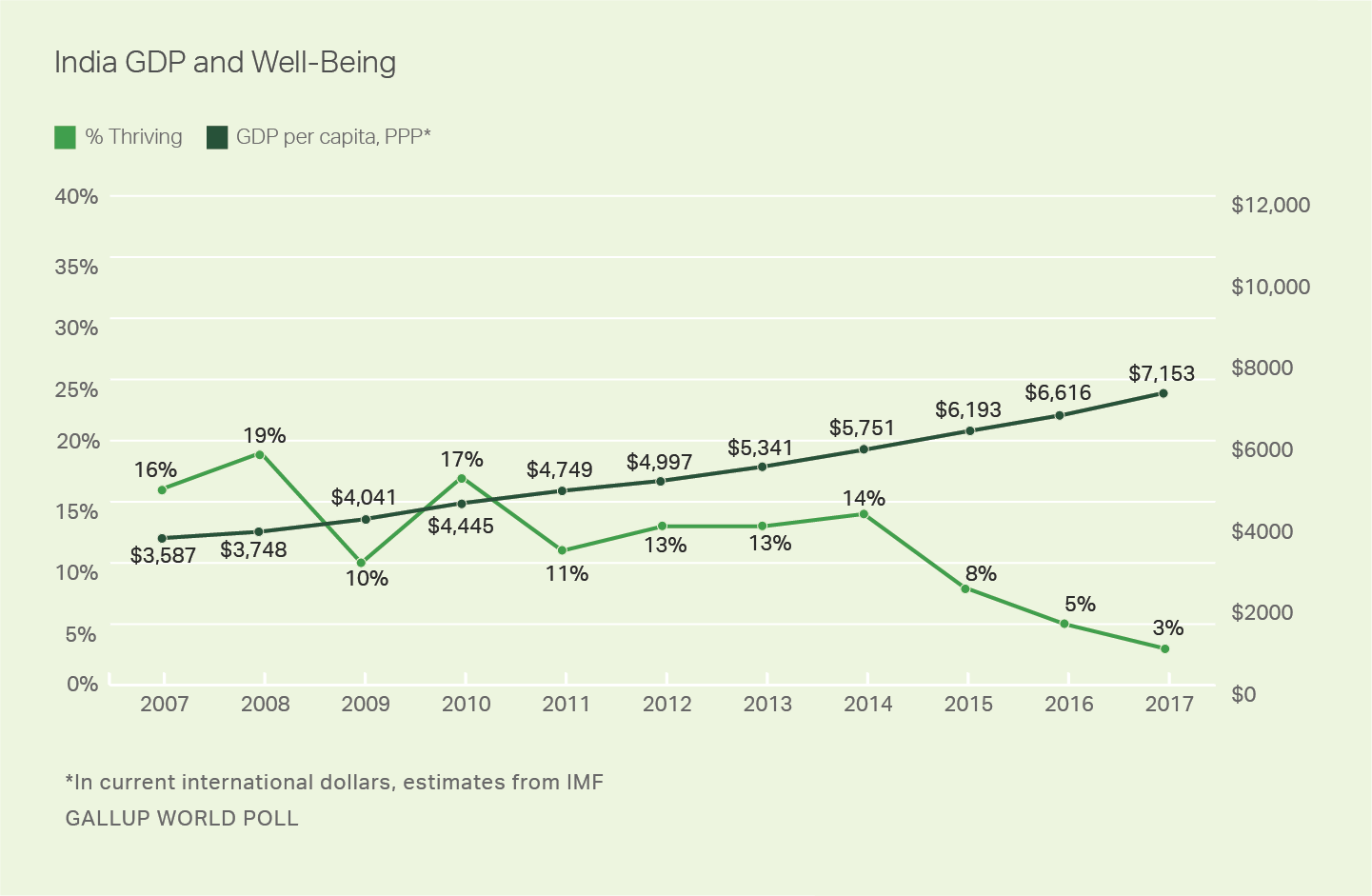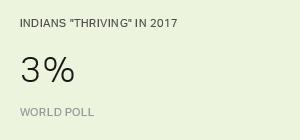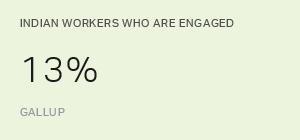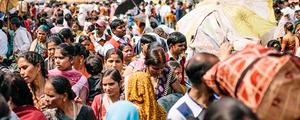Indians feel free. They feel confident. Their economy is booming. Yet, only 3% of India's population is "thriving."
India for some time has had one of the fastest growing economies in the world, and it's not showing signs of slowing down anytime soon. Indians' positive outlook toward their economy and their confidence in their institutions largely reflect that.
The majority of Indians (54%) see local economic conditions getting better, and the man they give much of the credit to for that, Indian Prime Minister Narendra Modi, enjoys nearly 80% job approval. Additionally, 86% of Indians are satisfied with freedom in their lives -- which is higher than at any point in the past decade.
Despite these tremendous feats, fewer Indians see their lives getting better than at any point in the past decade. So what's the problem?
Since the inception of the World Poll, Gallup has tracked the well-being of adults in India, and in more than 150 other countries. These data, widely publicized in the United Nations' World Happiness Report, are useful in understanding tectonic shifts around the globe.
We learned that the life evaluations, the way in which people rate their current and future lives, collapsed in Egypt prior to the Arab Uprisings -- even while gross domestic product (GDP) was steadily rising. We saw the same trends in Ukraine before the Euromaidan Revolution, and in the United Kingdom prior to Brexit.
We are now seeing ratings decline in India, with the steady downward spiral to 3% who rate their current and future lives to be considered "thriving" starting in 2015. But the end result is that Indians rate their lives worse now than they have at any point in the history of Gallup's global tracking. This 3% puts India among the lowest in Gallup's entire global database. However, GDP has been steadily rising in India as life satisfaction has evaporated -- just like in Egypt prior to the Arab Uprisings and in the United Kingdom before Brexit.

So why this disconnect? Why are Indians so optimistic about their economy and government, yet so negative about their own lives?
Unequal Distribution of Wealth
While India's economy is growing at an unprecedented rate, this growth is not affecting everyone equally. According to a recent Oxfam Survey, over 70% of all wealth earned in 2017 went to the richest 1% of Indians. Only 1% of newly created wealth went to the poorer half of the country. India's GDP has risen steadily but more Indians are reporting an inability to pay for food and shelter. A record 37% of Indians reported not having enough money to afford food at some point in 2017. The same holds true for Indians who had difficulty paying for shelter at some point in 2017 (31% in 2017).
Urban and Rural Divides
The majority of India's agricultural households are in debt, according to data from India's Ministry of Statistics and Programme Implementation. While Modi forgave the debt of 21 million farmers, experts question if a bailout is actually a lasting solution for Indian farmers trapped in a debt spiral. Trade liberalization, sterile seeds and delayed monsoon rains have all impacted Indian farmers' quality of life and their ability to provide for themselves and their families.
Beginning in 2015, rural Indians began reporting increased difficulty paying for food. That year, more than one in four rural Indians (28%) reported not having enough money to pay for food at some point that year (compared with 18% of urban Indians who reported the same hardship). It has increased every year since then, with 41% of rural Indians and 26% of urban Indians reporting inability to afford food in 2017.
Bottom Line
Economic growth and other classic indicators do little to forecast instability and change. Indicators that assess feelings, however, are essential tools to help leaders gauge the health of a society. Measuring how people feel about their lives proved to be critical in understanding the Arab Uprisings, Euromaidan Revolution and Brexit.
Considering that Indians feel worse about their lives today than they have in the history of Gallup's global tracking, it is crucial to be proactive in identifying and understanding the factors that are driving those feelings. When people perceive little opportunity for a better life, the population looks for change. As the wealth gap in India grows and Indians' ratings of their lives decline, India's leaders must pay close attention to the causes of hope, suffering and well-being.
Justin Lall is a Strategic Partnerships Manager at Gallup.




